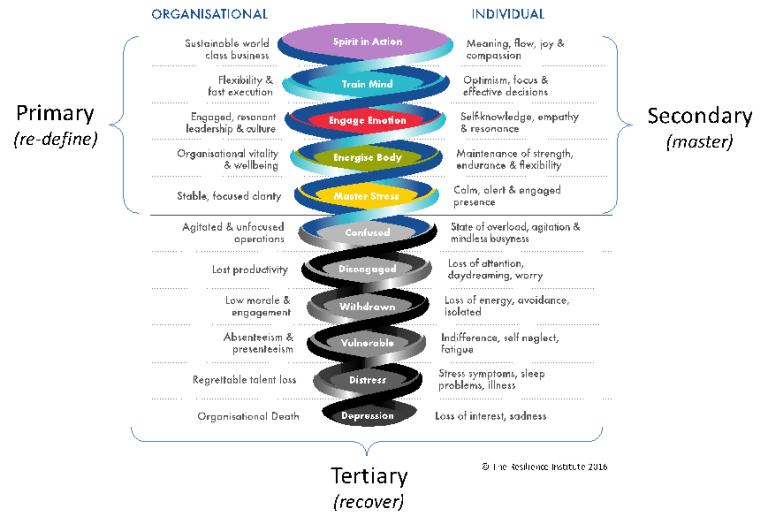Significant damages payouts have been awarded in sexual harassment matters, and it is important for employers to be vigilant in taking all reasonable steps to prevent sexual harassment in the workplace, writes Amy Zhang
The issue of sexual harassment in the workplace is at the forefront of social awareness following the unprecedented number of celebrity scandals in the last twenty-four months and the rise and prevalence of the #MeToo movement.
While most employers are aware of the relevant legislative provisions governing sexual harassment in the workplace, two important issues in respect to sexual harassment which are the subject of less detailed consideration are: the role of consent (and the need for overt conduct indicating non-consent) in determining whether conduct of a sexual nature is “unwelcome” as defined in the legislation; and the related concept of power imbalance and how this affects sexual harassment matters.
Both these matters are important for employers to take into account, whether for the purpose of investigating and assessing a sexual harassment allegation, or to consider the potential risks and exposures faced by the company.
Consent in the sexual harassment context
The question of whether a relationship is consensual most often arises in criminal cases involving sexual assault. However, this concept is also relevant in civil sexual harassment cases in determining whether conduct is considered “unwelcome” as defined under the Sex Discrimination Act 1984 (Cth).
The cases make clear that a failure by the complainant to challenge each incident of unwelcome conduct does not unequivocally amount to acceptance of that conduct. It is well recognised by the Courts that a complainant may remain silent in the face of sexually unwelcome conduct for a number of legitimate reasons.
Indeed, seemingly consensual relationships in the workplace can involve unwelcome conduct and amount to sexual harassment. This may be because the employee consents to engage in the conduct only out of fear of reprisal or fear for job security; or because within the relationship, the employee consented and welcomed certain acts, but not all.
For example, in the case of San v Dirluck Pty Ltd and Another, the Court accepted that ‘sexual banter’ was unwelcome even though the applicant did not directly tell the harasser that the behaviour was unwanted and despite the applicant having responded positively to some of the sexual banter. The Court observed that the applicant’s engagement in the sexual banter was an attempt to alleviate the situation. Further, it was accepted that it was difficult for the applicant to expressly resist the harasser’s advances because he was her direct manager at the time.
“The most typical example of power imbalance in sexual harassment cases is where a junior staff member is subject to unwelcome advances or other conduct by their boss or a more senior staff member”
Power imbalances
A power imbalance between the victim and the harasser is a common feature of sexual harassment cases. In many circumstances, the power imbalance between the parties impacts on the ability of the victim to resist or expressly indicates that the sexual conduct is unwelcome, and may perpetuate the harassment and/or exacerbate its impact on the harassed person.
Unwelcome conduct
The most typical example of power imbalance in sexual harassment cases is where a junior staff member is subject to unwelcome advances or other conduct by their boss or a more senior staff member. The difference in relative authority of the harasser and the victim plays an important role in how the victim may react to the unwelcome conduct. This is recognised by the Courts and Tribunals when considering whether there has been sexual harassment.
For example, in the case of Elliot v Nanda, the applicant was a 17-year-old medical receptionist of a rural medical centre who was sexually harassed by one of the doctors at the centre. The respondent harassed the applicant by talking about his sexual encounters and propositioning the applicant for sex, as well as through inappropriate touching. The Commission considered the disparity in the parties’ age and level of seniority, the fact that the doctor was regarded as an important professional and a pillar of the local community, and the fact that the respondent was paying the applicant’s wages, as factors explaining the applicant’s lack of express indication that the conduct was unwelcome. The Commission ultimately found that the applicant had been sexually harassed, notwithstanding the lack of express indication of non-consent to the harassing conduct.
Damages
The power imbalance between parties is also a factor the Courts and Tribunals consider when determining the severity of the harassing conduct and the amount of damages to be awarded to the successful applicant.
The Victorian Tribunal in Tan v Xenos considered that the power imbalance between the parties in this case was relevant to calculating general damages. In this matter, the applicant was a registrar in her third year of training in neurosurgery. The respondent, Mr Xenos, was a neurosurgeon in the same hospital. Mr Xenos sexually harassed the applicant by touching her breasts, kissing her on the lips and pulling his erect penis out of his pants without her consent. The Tribunal considered that the significant power imbalance called for a significant award of general damages, and noted that not only was Mr Xenos senior to the applicant in position and age, he was in a great position of influence as to her qualification and future as a surgeon. The applicant’s training assessments were compiled from the observations of all senior neurosurgeons, and Mr Xenos was held in great esteem by all of the other surgeons, and knew that the applicant needed a good performance review due to past performance issues. The Tribunal considered this, among other factors, in determining that the applicant was to be awarded general damages of $100,000.
Lessons for employers
In light of the above, when investigating and assessing allegations of sexual harassment, employers need to bear in mind that a lack of overt conduct indicating non-consent, positive conduct to the contrary, or the fact of a prior or existing relationship between the relevant parties, are not determinative of whether there has been sexual harassment. Each case depends on its facts, and the surrounding circumstances, including any power imbalances, need to be considered.
“The more significant the power imbalance, the higher the general and aggravated damages awarded”
Given the significant damages payouts that have been awarded to date in sexual harassment matters, it is important for employers to be vigilant in taking all reasonable steps to prevent sexual harassment in the workplace. A failure to do so may result in employers being found to be vicariously liable for the sexually harassing conduct perpetrated by its employees, and employers may accordingly face significant awards for compensation.
The cases and issues discussed above highlight the need for employers to have comprehensive policies and codes of conduct setting out the parameters for acceptable workplace behaviour; and effective processes which protect employees from sexual harassment, ensure that senior staff are not exploiting power imbalances, and which provide an independent, confidential and reliable process for the raising of complaints of sexual harassment and victimisation.
Employers are also encouraged to provide regular training to their employees on what constitutes sexual harassment and how unwelcome sexual conduct is defined by the legislation and case law. These training sessions should ideally include sessions specifically tailored for senior staff, who may not appreciate that due to power imbalances in the workplace, the Courts can hold what is a seemingly consensual sexual relationship to be “unwelcome” for the purpose of the Act.
5 key takeaways: power imbalance, consent and sexual harassment
- A failure by the complainant to challenge each incident of unwelcome conduct does not unequivocally amount to acceptance of that conduct. It is well recognised by the Courts that a complainant may remain silent in the face of sexually unwelcome conduct for a number of legitimate reasons.
- Seemingly consensual relationships in the workplace can involve unwelcome conduct and amount to sexual harassment. This may be because the employee consents to engage in the conduct only out of fear of reprisal or fear for job security; or because within the relationship, the employee consented and welcomed certain acts, but not all.
- The Courts have taken into account the power imbalance between the parties when considering whether there has been sexual harassment, and in determining damages. The more significant the power imbalance, the higher the general and aggravated damages awarded.
- When investigating and assessing sexual harassment allegations, employers need to bear in mind that a lack of overt conduct indicating non-consent, positive conduct to the contrary, or the fact of a prior or existing relationship between the relevant parties, are not determinative. Each case depends on its facts, and the surrounding circumstances, including any power imbalances, need to be considered.
- Employers need to take all reasonable steps to prevent sexual harassment in the workplace, have good policies and procedures in place, including regarding complaint handling, and should provide regular training to its employees.



